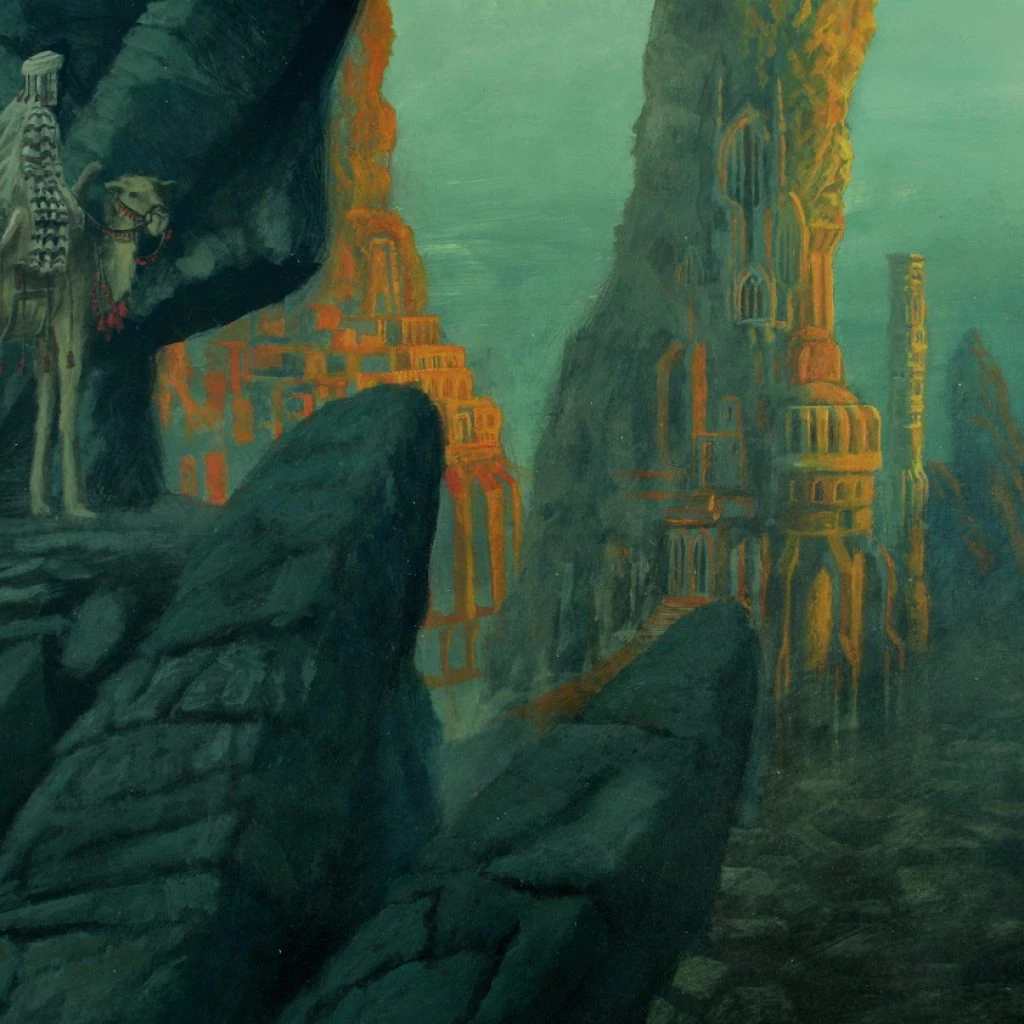Lost City of Iram
Iram (also known as Wabar or Ubar) is a fabled city lost in the Rub' al Khali (Arabic for The Empty Quarter) of the Arabian Peninsula, and related to the city of 'Iram of the Pillars' in the Islamic Quran / Koran.
It is rumoured to have been an Entropot for Frankincense, and a Bedouin legend. The rumour that it was destroyed by natural disaster or by an a act of God. The former is was likely either an earthquake, and the latter being because of the inhabitants were allied or controlled by the Egyptian Empire. A few other myths hint that it fell due to it being inhabited by Giants and/or Jinn, who worshipped eldritch gods. It was then destroyed by the gods or God himself as punishment. Further rumours hint at treasures of all kind lie buried in it below the sand, including fabled magical items, and magical spells. Also it was meant to have had lofty pillars big enough to allow the Giants or Jinn to pass through the city with ease.
Summary
Iram was a city in the Empty Quarter desert on the Arabic Peninsula. For some reason unbeknownst to the wider world it was swallowed by the sands. A stop over for caravans & merchants, it was known as a major trading hub. According to local legends, especially with the Bedouin people, it was swallowed by the order of Allah due to corruption. Saying this older accounts are whispered that other reasons exist. These seem to point it was older gods that cursed it, and was due to the humans, Jinn, and Giants practising dark magic. What type of dark magic is unknown at present, but rumoured to involve rituals carried out under a gibbering moon, and strange goat-like humanoids prancing through the city playing strange 'tunes'. These 'tunes' were made on pipes made of human thigh bones, and drums made with the skins of sacrificial victims.
How true this is has never been proven, and until Iram is unearthed, the world can still sleep peacefully until then.
Historical Basis
There was a city there in that quarter, and was lost. Known for it's pillars of gigantic size, and much of its architecture being the same, it was swallowed in time. An earthquake on such a sandy region could easily have swallowed it.
Spread
It is known to many of the Islamic peoples to a greater or lesser degree, especially those who intimately know the Quran. Sometimes the story is told to outsiders to scare them into following righteous paths and/or being careful in the desert. Because of this, a few persons in Europe know of the tale, and some occultists are interested to what magics may still rest there.
In Literature
It is mentioned in the Quran and there is talk it is mentioned in a grimoire called The Necronomicon.
"I searched for that place for decades. Had first heard of it after reading the Necronomicon, and wanted to see it for myself. Haunted I was, haunted. A calling on the hot winds of the Sahara. Drove me to seek help first but no Imam, or physician could help.
Got to the point I had to go to the Empty Quarter. Travelled with the Bedouin as far as they would take me into that accursed place. All around sandstone, and sand dunes, nothing else. They pointed me to a direction roughly south, saying that they would go no further, and that there is a rocky region partially under the sand there.
So away I went with my two servants. Within a day's travel we neared it, an by then we were stuck. Sand storms like never before seen whipped up. And one of the servants stuck his head out of the tent, and died. It had ground his face off down to the bone and had started to smooth it out. The following few hours, my second servant had gone insane saying he heard pipes being played repeatedly in the howling winds, and ran outside. Still afraid I stayed in, even when the sandstorm had stopped hours ago.
I travelled the rest of the way there with the remain camels. It is then I found a rough region of sandstone and sand. It looked as if it were circular and the ground pushed up as if something was underneath. A valley in sandstone was to my right and partially filled in. Ther was my second servant, up to his waist in sand and his bone broken, all his bones. A strange bone flute was lying beside him, and an inscription lay on it.
The inscription said: 'You came to the City of the Pillars, and you will travel no further. Life has been given and yours is spared. Never return for yours will be next, and the treasure & majesty of the powers here will never be yours.'
After that, I left and came here to Mecca. Also, I sent word to every major power I knew in our Empire and to others we trade with in Europe. Warned them not to look for this cursed city, and to forget about Iram. But it didn't stop one, a Frank by the name de Rais asking probing questions about it. I warned him, countless times, not to bother with it. I'm afraid that he may come, or send some of those poor fools he knows in Parisius to travel to Iram. I also warned that lady of the Aethiopea, Lady Sascha not to travel there, especially if she catches up to that serpent she chases. The effects could be devastating if she did."
Chuma al'Sadiki, the last time he talked to the librarian of the Alexandrian Library.



Comments